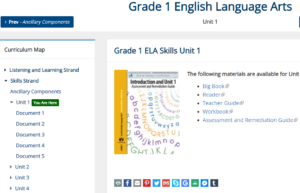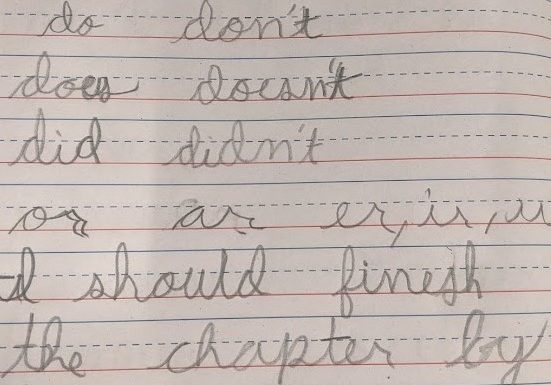Happy Wednesday Teachers of Emergent Bilinguals! Let’s wrap up our phonics for emergent bilinguals series by discussing dictation: the neglected piece of phonics instruction. Dictation is the last step in our phonics sample lesson for emergent bilinguals, when the teacher dictates words and sentences targeting the sound-spelling objective, and students write them down!
But first, why is dictation important to teaching students how to read?
The research on the benefits of explicit phonics instruction for the reading levels of both monolingual English and emergent bilingual learners is well established: phonics instruction helps kids become better readers!
The dictation-spelling component, specifically, has been less studied. However, solid research exists on the relationship between reading and spelling. Dictation is a vital piece of the phonics lesson: the better we can spell explicit sound-symbol correspondences, the better readers we are, and vice versa. Reading and spelling are two sides of the same coin.
Many K-2 teachers do their best to faithfully implement lessons from their phonics curriculum. For instance, Fundations includes a dictation component in the weekly lesson. Upper grade ENL teachers, who want to teach phonics to older students in Stand-Alone, unfortunately have no standard curriculum to work with. Typically, phonics instruction will consist, at a minimum, of studying the symbol, and practice reading it in words and sentences.
But with lots of newcomers, large class sizes, and time constraints, dictation is often the neglected piece of phonics instruction. I see lots of whiteboards in kindergarten classes, with kids excited to practice writing their letter and CVC words, only to see them gone by the first grade.
have students spell sounds, words, and sentences
In our model lesson, dictation happens at a couple of different points. In Step 1, Review, students do an audio drill where the teacher says a sound, and the students spell the sound on a whiteboard or in their notebooks. For example, the teacher says long /ō/, and the students write down: o, o-e. Those are the two /ō/ spellings they’ve learned so far.
In Step 2, Introducing New Information, students are learning an additional long /ō/ spelling: the oa vowel team as in the word boat. After introducing the spelling and having them practice reading some words and sentences,
it’s time for Step 3, Dictation.
Now the teacher will dictate some words with the oa spelling, and students will practice writing the words down. This very important step reinforces the new information they’ve just learned. It’s also a formative assessment tool for the teacher to see who got it, and who didn’t.
So, I’m going to ask my students to spell between 3-5 words:
road, goal, soap, soak
Feel free to make these harder if your students are older, more proficient speakers by adding prefixes and suffixes, or including multisyllabic words: soaking, presoak, soaked; crossroads, boastful. And always remember to discuss the meanings of the words! It doesn’t have to take too much time, just make sure your learners are reading with some clue as to the word’s meaning.
Next, dictate 1-2 sentences with the target words:
This is also a good opportunity to use any unfamiliar words in a context for more vocabulary building.
I soaked the dishes (before I washed them).
We felt proud (when we graduated),
Notice, again, that I made the sentences shorter or longer, depending on my students’ abilities. Importantly, when you create these sentences, make sure to include only the spellings that students have already been exposed to. For examples, if you have not yet taught them the ow vowel team as in snow, don’t include that sound-spelling in the sentence.
Dictation should reinforce previously or newly learned information!
Let’s wrap up our phonics lesson with a share-out: “Which vowel team did we learn today? What sound does it make? What are some words that are spelled with ‘oa’?” This gives students a chance to restate the information they learned, ask questions, and hold it better in memory.
Want to try this lesson with your students? Download the phonics lesson template for emergent bilinguals here.
Optional: If you have access to decodable readers, and you have the time, I would love for students to read aloud. Decodable readers are short texts that are controlled for spelling, so readers can practice accuracy and fluency. In this case, we’d aim for a decodable reader that targets or contains oa. These are less easy to find if you’re not working with a published phonics curriculum.
The best FREE available resource is on engageny.com, under ELA curriculum on the home page > grade level > skills strand (left-hand side menu)>unit page. You can download the reader from there. Unfortunately, you will have to sift through the curriculum to find the reader you’re looking for.

Some resources available with an individual or school membership are:
Finally, good readers for purchase can be found on this list.
See you next week! Please post comments or question below!

Leave a Reply